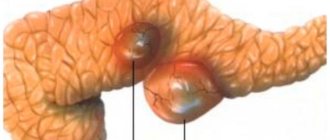In the modern world, not everyone can maintain bright and contrasting vision. Experts blame the use of various gadgets, genetics, ecology and other factors for this. One of the most common ophthalmological pathologies is astigmatism. We will talk about what methods are used to treat it in this article.
According to WHO experts, refractive errors, also called ametropia, are very dangerous.
In this article
- What is astigmatism?
- Causes of astigmatism
- Types of pathology
- Diagnosis of astigmatism
- Wearing glasses for astigmatism
- Contact lenses for ocular astigmatism
- Laser treatment for astigmatism
- Gymnastics for the eyes
If visual impairment is not corrected in a timely manner, it can lead to serious consequences, for example, changes in the shape of the eyeball and even complete blindness. Refractive errors include nearsightedness, farsightedness and astigmatism.
According to official data published on the WHO website, today, more than 153 million people around the world suffer from various visual pathologies caused by refractive errors. Unfortunately, refractive errors cannot be prevented, but they can be diagnosed early by visiting an ophthalmologist at least once a year. What treatment of astigmatism is considered the most effective and what determines the technique that will be recommended by the attending physician?
Eye astigmatism: causes, treatment methods
Unlike nearsightedness or farsightedness, in the presence of astigmatism it is impossible to determine the distance to the object that will provide a clear picture. Even if the distance is suitable for the refraction of light in one meridian, it will not coincide in another meridian.
Children are most often affected by astigmatism. Some people are already born with this pathology. But they can ignore the presence of the disease and treat astigmatism in adulthood, when the pathology does not make it possible to live a normal life.
There are several types of astigmatism: corneal, lenticular, hyperopic, mixed. Each of them has its own characteristics and shapes. All astigmatism has 4 types:
- physiological;
- congenital;
- pathological astigmatism;
- acquired.
The doctor examines the patient, determines the type and selects procedures to get rid of the pathology. You can undergo treatment at any age, but the earlier you start, the fewer consequences there will be for the body.
What happens to the eyes with astigmatism
The cornea and lens of the eye normally have a certain shape. They are curved equally in all directions, allowing the eye to focus light and transmit it to the retina. But with the development of astigmatism, a certain curvature appears, due to which incorrect refraction occurs.
The retina of the eye stops receiving information; focus appears either in front of the retina or behind it. This results in a blurry image. What happens to the eyes with astigmatism? The work of the organ becomes unnatural, increased tension is created, and fatigue occurs. The quality of vision deteriorates significantly over time, causing headaches. Other health problems also appear, so eye disease must be treated.
Kinds
- 7.1 Keratotomy
Experts divide astigmatism into two large groups: physiological and pathological (acquired):
- Astigmatism, the values of which do not exceed 0.34-0.35 diopters, is considered physiological, since it does not have a significant effect on the clarity of vision and visual acuity. Physiological astigmatism is often congenital and does not require additional correction. Physiological changes develop in utero, when the formation of the cornea and lens occurs, at 3-6 weeks of pregnancy. This process is associated with genetic characteristics or defects.
- Pathological astigmatism can develop for various reasons: trauma, mechanical damage to the cornea, retina or lens. With timely surgical intervention, it can be successfully treated, especially in children.
Doctors divide pathological astigmatism into corneal (subject to changes) and lenticular (when pathological changes are observed in the lens).
There is also a distinction between regular and irregular astigmatism. It depends on the type of refractive power of the eye.
- Regular astigmatism is usually congenital.
- The wrong one is acquired as a result of injuries or illnesses suffered. In addition to the fact that the meridians differ in basic curvature, they also have different refractive characteristics, and, as a result, clouding of the lens, retinal detachment, and deformation of the cornea. Irregular astigmatism cannot be corrected and can only be treated with surgery.
The figure shows a focusing diagram for astigmatism.
Depending on the nature of development, astigmatism is divided into three types:
- myopic (accompanied by an increase in the refractive power of the organs of vision);
- farsighted (accompanied by a decrease in refractive power);
- mixed (intensity may vary).
Preventive measures
Preventive measures consist of a list of recommendations that must be followed. If the work involves reading a lot of information, as well as spending a long time at the computer, then work should be alternated with rest; the ideal option is to spend some time in the fresh air.
The light on the workplace should fall from the left side. You should not use too bright lamps; a regular 60 W light bulb will suffice. If doing work involves straining the organs of vision, then not only the workplace should be illuminated, but also the room around it.
Experts do not recommend reading horizontally. If your eyesight is strained, you need to take breaks every half hour. Sports, swimming, cycling, and hardening are very useful for the general condition of the body, as well as vision. The diet should largely consist of vegetables and fruits with a high content of keratin. The main thing in food is variety, in which all the necessary vitamins and microelements enter the body.
Mixed type astigmatism, treatment features. Can myopia and farsightedness occur simultaneously? Reverse astigmatismBlepharitis, what is it?
Types of surgery
Keratotomy
Keratotomy or keratoplasty is resorted to when other methods are ineffective or it is not possible to carry them out. However, it is worth remembering that the risks of surgical intervention are much higher than in other methods.
During keratoplasty, incisions are made on the cornea, which change the refractive power of the eyeball. With a high degree of astigmatism, it may be necessary to replace the cornea with an artificial or donor one. The downside of this operation is the long recovery time. The cornea takes a long time to heal. Keratotomy does not guarantee complete cure for astigmatism. It often happens that symptoms may reappear after a few years. This operation is performed only on patients who have reached the age of majority.
Patient's eye after lamellar keratoplasty
Lens implantation
This method is based on the fact that a phakic (a more high-tech analogue of a regular soft silicone-hydrol lens) lens is placed between the lens and the cornea. This method is an excellent means of correcting vision and getting rid of astigmatism, since the lenses are selected individually and made to order depending on the patient’s vision characteristics (radius of curvature, axis, cylinder, sphere - all measurements are carried out by an ophthalmologist after a thorough examination).
Eye with phakic IOL
The main disadvantage of this operation is also a plus. In case of any surgical intervention, the lens is removed and a new one is put in its original place. It is also possible to remove a phakic lens if the patient experiences discomfort after implantation or allergic reactions in the eye.
Thermokeratocoagulation
This operation is suitable only for those patients who need to increase, rather than reduce, the refractive power of the cornea. A special heated needle is used to cauterize individual areas of the cornea that require correction. Currently, this method is used extremely rarely due to possible risks of complications and inaccurate prediction of the result.
Folk remedies
Many people use traditional medicine to treat astigmatism. It is worth noting that, unfortunately, it is impossible to completely get rid of this disease with the help of herbal decoctions or infusions alone. But such drugs are excellent as additional therapy, as they can enhance the therapeutic effect of traditional methods of treatment. Below are the most common recipes.
Table: Traditional medicine for astigmatism
| Product name, photo | Application |
| Eyebright decoction | To prepare the decoction, you need to pour 500 ml of boiling water with 2 tbsp. l. chopped herbs and leave for 2 hours. After infusion, the product must be filtered through several layers of gauze and taken orally 100 ml 3 times a day. The duration of the therapeutic course is 14 days, after which you need to take a week's break. |
| Motherwort infusion | In the treatment of astigmatism, motherwort is often used, a plant that has a positive effect on the visual system. To prepare the infusion, you need to pour 200 ml of boiling water into 1 tbsp. l. plants and leave for 30-40 minutes. After straining the medicinal infusion, take it 1 tbsp. l. 2-3 times a day. |
| blueberries | It's no secret that blueberries contain useful components that improve vision and have a positive effect on the visual system as a whole. In addition, regular consumption of berries promotes rapid regeneration of the retina. |
| Grape seed decoction | These seeds contain many naturally occurring antioxidants. They are useful for the human body, in particular for the organs of vision. Pour boiling water over 1 tbsp. l. grape seeds and leave the product for 30 minutes. Take the medicine 3 times a day. |
| Cherry berries | One of the most delicious methods of combating astigmatism. Cherry berries can be eaten raw or canned, and in unlimited quantities. As an alternative, you can apply berry compresses to sore eyes. |
Even if you decide to use proven traditional medicine, this does not mean that you can refuse traditional therapy. Do not forget that traditional methods of treatment are only an addition, because no infusions or decoctions can change the shape of the cornea of the eye.
Physiotherapy
- Contrast lotions are effective for astigmatism. To do this, take 2 cups: pour hot water into one, cold water into the other. Place lotions in them. Hot lotions are applied to the eyes for 30 seconds, then cold ones.
- Self-massage is also useful. Closed eyelids are gently massaged with fingertips. This procedure improves blood circulation.
Watch a video about what astigmatism is and whether it is possible to get rid of it with eye exercises:
Symptoms of the disease and causes
Mostly, the first signs of astigmatism appear in preschool age. But children often simply cannot explain to their parents that they are experiencing some discomfort. Therefore, it is imperative to visit a doctor and conduct diagnostics to determine visual impairment. If a child begins to complain about eye fatigue, painful sensations, or says that he sees poorly, you should listen. Symptoms of the disease:
- children confuse numbers and letters that are similar in spelling;
- visual function is significantly reduced;
- double vision occurs;
- increased eye fatigue;
- persistent headache;
- vision becomes defocus;
- one of the symptoms is the sensation of a foreign object in the eye;
- burning;
- the eye becomes red and painful;
- you have to squint to see the object;
- Difficulty concentrating and maintaining focus;
- the child’s performance at school declines;
- Difficulties arise when visually determining the distance to an object.
These are the main symptoms that accompany astigmatism. It is not difficult to notice them; if they occur, you should contact a specialist. If you don't know which doctor to contact, we will tell you. This is an ophthalmologist, he specializes in the treatment of eye diseases.
Reasons for the development of astigmatism
There are many reasons for the development of poor vision. Astigmatism is a common type of eye disease. Doctors still cannot come to a consensus on what is its main cause, but they identify the following factors:
- there is a corneal injury that provoked a change in its shape;
- presence of scars on the cornea;
- conjunctivitis and other eye diseases;
- corneal burns;
- inflammatory processes affecting the eyes;
- some types of corneal diseases, for example keratoconus;
- previous eye surgery;
- eyelid lesions (blepharitis and similar ailments);
- determination of congenital pathologies.
These are the main causes of astigmatism. Typically, both eyes are affected. In any case, you need to contact an ophthalmologist who can correct astigmatism. Our center will provide you with professional assistance.
The danger of the disease and its consequences
With eye astigmatism, a number of changes occur in the body, so it is important to deal with astigmatism in a timely manner. Here are the main consequences:
- the perception of the world is disrupted, it is difficult to perceive colors and shapes;
- strabismus develops;
- visual acuity is significantly reduced;
- amblyopia begins to develop;
- regular headaches lead to increased fatigue;
- the child’s performance at school declines, the adult finds it difficult to work;
- The level of stress increases, against the background of which other health problems develop.
Therefore, it is worth contacting a specialist in a timely manner. Treatment of astigmatism in our clinic will allow you to quickly eliminate the problem, restore your vision and enjoy the world around you.
Lens replacement due to pathology
This method of surgical intervention is considered, today, the most practical and optimal way to treat astigmatism in situations where the cause of the development of pathology in the future was injury, deformation or disruption of the development of the lens itself. However, according to some ophthalmologists, this correction method can be used, in rare cases, to correct the corneal form of ametropia. What is the essence of this process? After a detailed examination of the patient and determination of the type and degree of astigmatism, specialists make intraocular, or intraocular, contact lenses. They can have either a spherical or toric shape. After careful checks, these optical products are implanted directly inside the eyeball, replacing the damaged lens. The operation is performed under local anesthesia.
After surgery, the incision above the cornea is carefully sutured, and after just a couple of hours the patient can go home. It is important to remember that after replacing the lens, you must follow a gentle regime for the eyes: try to avoid working at the computer, watch less TV, use sunglasses with polarized lenses, etc. Despite the many advantages of this method, some patients outright refuse to undergo it. The risk of complications is quite rare, but still cannot be completely excluded. It can manifest itself either in redness of the eyes or increased lacrimation, or in more serious consequences, for example, suture dehiscence, eye infection, intraocular bleeding, etc.
Why is astigmatism dangerous?
Many people who notice the first signs of astigmatism are not in too much of a hurry to see a doctor. And in vain. Left untreated, it can lead to frequent headaches and sore eyes. Childhood astigmatism is especially dangerous. Without quality treatment, a child may develop strabismus and a sharp decline in vision. Many parents are trying to find out how to treat astigmatism in children at home. There are some tips for treating this condition at home. But they will only be beneficial if they are carried out in combination with high-quality medical treatment.
How does astigmatism affect vision?
We are all well aware of the concepts of myopia and farsightedness, when problems arise with the perception of objects at close or far distances. What is eye astigmatism and how does it affect vision? People suffering from this pathology see a distorted picture. Some areas (or all objects) may be blurry, while others may be out of proportion. Ophthalmologists like to draw an analogy with a reflection on a metal spoon: the picture is sometimes unclear, sometimes disproportionate. In this case, it absolutely does not matter at what distance the object is located.
The level of distortion of objects is influenced by the severity of the pathology. When the difference in meridians is less than 1 D (diopter), the distortions are almost invisible and do not cause discomfort to a person. In general, ophthalmologists distinguish three degrees of astigmatism:
- weak - up to 3 D;
- average - 3-6 D;
- high - more than 6 D.
A weak degree usually requires minimal correction. With moderate vision deterioration becomes noticeable, the outlines of objects “float”, treatment of astigmatism is necessary. A high degree is characterized by severe distortion of objects and a number of accompanying symptoms associated with increased visual fatigue: pain in the eyes, headaches, dizziness, double objects.
Here is a photo that shows what it is - eye astigmatism and how a person with such a pathology sees.
Methods for diagnosing astigmatism
The development of astigmatism is a common problem recently. Moreover, among the patients one can observe not only children, but also adults who have used conservative methods for correcting the quality of vision for a long time. However, sooner or later, most people come to the conclusion that they need to restore the cornea and retina with the help of correction. But initially, methods for diagnosing astigmatism are used.
It is worth contacting a doctor who will conduct an examination, find out the symptoms and help improve the quality of vision. It is quite difficult to independently determine the symptoms, especially if the child has a congenital vision disorder. He doesn't fully understand what the world should look like. But an ophthalmologist, using diagnostics, will be able to determine the presence of the disease by signs of changes in the structure of the eye. The following research opportunities are used:
- optical coherence tomography of the eye;
- ultrasound scanning;
- examination using a Goldmann lens;
- EEG;
- computer perimetry;
- use of cylindrical lenses.
After identifying the problem, the doctor chooses the type of correction. Regardless of whether the cornea or retinal elements need to be corrected, our center prescribes comprehensive vision correction.
What are the degrees of astigmatism?
To make it easier for ophthalmologists not only to identify signs of a disorder, there is a certain classification. It depends on how strongly light rays are refracted in the main meridians of the eye of a patient with astigmatism. It is customary to distinguish the following degrees of ocular astigmatism:
- weak, not exceeding 3 diopters;
- medium - from 3 to 6 diopters;
- high - more than 6 diopters;
As it becomes clear, the higher the degree of impairment, the more difficult it is to correct it, and the more labor-intensive the process of creating optical products used for vision correction will be.
Limitations with astigmatism
What should you not do if you have a refractive error? People with this diagnosis should not engage in activities related to computers, precision instruments and small parts. If the sphericity of the cornea of both eyes is impaired, the following recommendations should also be followed:
- stop driving at night;
- Avoid watching TV or reading books for long periods of time;
- do not read in poor lighting;
- Avoid watching movies in 3D.
If there is a progressive refractive error, then driving a car and serving in the army is prohibited.
Is severe astigmatism treatable or not? The pathology is treated regardless of the degree, but the method of therapy may differ.
Treatment of astigmatism: effective methods
More and more people are suffering from astigmatism, but it is quite easy to get rid of this disease. However, there are cases when the patient does not seek help for a long time and the situation worsens. The appearance of the disease should not be scary, because there are effective methods for restoring the cornea and lenses.
Eye correction with surgery: recovery for astigmatism
This is the best solution for eye damage. If symptoms of astigmatism occur, you should immediately contact an ophthalmologist and undergo surgery. It does not take much time, helps restore eye function, eliminates corneal defects and completely eliminates astigmatism.
Laser removal of astigmatism, astigmatomy, and refractive lens replacement are used. The duration of the procedures is short, anesthesia is used. The patient will not feel anything during the session.
Treatment of astigmatism with effective methods
If there is a reason why retinal surgery cannot be performed, optical correction is applied. It is important to understand what eye astigmatism is. It is characterized by disruption of organ activity. This can be corrected simply by using glasses or special lenses.
For varying degrees of deviation, the specialist selects cylindrical lenses. With astigmatism, they can be positive or negative. This is the simplest solution to the problem in case of vision problems.
But there are disadvantages: a patient with astigmatism does not want to wear glasses, especially a child. You need to carefully monitor your hygiene; dirt accumulates on your glasses, which can only increase astigmatism. The lens looks better, but requires more care. In both cases, operation creates inconvenience.
Nevertheless, optical restoration of the eye structure is effective and is in great demand. Call us and find out how to eliminate astigmatism and what the cost of the procedure is.
Is it possible to cure astigmatism using traditional methods?
Astigmatism is caused by many factors. Some patients think that traditional medicine should be used for various types of astigmatism. This is partly true, but it is impossible to cure astigmatism with folk remedies.
Herbs are allowed. They will affect the cause, but not the effect. It is easy to relieve inflammation and eliminate infections that contribute to astigmatism. Traditional medicine has “tied hands” against the disease itself. But with the doctor's permission, you can use some recipes for general strengthening.
How is the disease diagnosed?
If you notice any signs of astigmatism, you should make an appointment with an ophthalmologist as soon as possible, since the disorder will actively progress. The first thing a specialist should do is collect an anamnesis: clarify where and who you work for, how much time on average you spend at the computer or other gadgets, what diseases you suffer from. If your answers “lead” the ophthalmologist to a diagnosis such as ocular astigmatism, then the doctor will perform the following procedures:
- refractometry is one of the most well-known methods for analyzing the refractive power of the eye, in other words, checking whether the patient has one or another refractive error
- visometry - testing visual acuity. If this violation is suspected, the procedure is carried out both without correction and with correction. The patient is put on a frame in which one eye is completely closed, and cylindrical lenses are placed in front of the other, differing in their refractive power;
- skiascopy, or as this research method is also called, the shadow test method. It is performed using spherical and cylindrical lenses. While the patient is “trying on” them, the doctor carefully observes the movements of the shadows in the pupillary area, illuminating this area with a beam of light reflected from the mirror.
Having received the results of these examination methods, the ophthalmologist will need to determine what exactly caused the astigmatism. For this purpose, biomicroscopy of the eye is performed - a thorough examination of the eyeball using a special device - a slit lamp, which is a combination of a light source and a diaphragm. This study is carried out in a dark room, which allows for a certain contrast between the illuminated and unlit areas of the eye.
Another examination method is ophthalmometry, which is performed using an ophthalmometer. It allows you to determine the refractive ability of the cornea and identify the corneal form of astigmatism. The most modern and reliable method of examination is computer keratotopography. It is carried out using a laser and a computer. The laser scans the cornea, and upon completion of the processing, using a computer, the specialist receives detailed information about the shape of the cornea, its refractive abilities, as well as all defects present in the main meridians.
Disease prevention
Of course, it is easier to prevent a disease than to treat it. But people forget or simply neglect all methods of disease prevention until it affects them personally.
Prevention of astigmatism is very simple, it does not take much time and effort, but will preserve your health for many years.
So, to avoid a disease such as astigmatism, it is enough to simply alternate work with a lot of strain on the eyes with rest.
Workplace lighting should be selected very carefully. It is better to place the lamp in front or to the left of the person. The lighting in the room should be one hundred percent, because when the gaze moves from a lighter area of the room to a darker one, the eyes get tired faster.
These simple tips will help preserve your vision for many years.
Gymnastics for the eyes
To call eye exercises one of the ways to treat astigmatism would not be entirely correct. However, this is a very good method of prevention, as well as maintaining vision at a certain level with this pathology. The effectiveness of gymnastics is explained by the fact that when performing exercises, the eye muscles relax and rest, thus ensuring accommodation of the lens. They normalize blood circulation and metabolic processes. The most common simple exercise is to close your eyes for a few seconds. This promotes blood flow and accelerates metabolism in the eye muscles.
Indications for surgery
If a patient presents with symptoms to an ophthalmologist, and the presence of astigmatism is confirmed, the best solution to correct the problems would be eye surgery. Indications for surgery are:
- The patient's age reached 9 years. It is possible to carry out correction at an earlier age, but not every doctor will undertake this, and it will be difficult for the child.
- Intolerance to glasses and lenses or inability to choose a model.
- Headaches occur regularly, the patient constantly faces symptoms.
- Minor damage to the cornea, then the operation will be quick.
- The damage to the cornea is severe, and other than this method there are no options for correcting astigmatism.
- There is damage to the lens.
- Serious problems begin with the eye; in this case, surgery must be performed as quickly as possible.
Among the indications, it is worth highlighting the reluctance to wear glasses or contacts; children are susceptible to such an accessory. You can safely carry out the operation if there are no contraindications that could harm your health.
Contact lenses and astigmatism
According to the majority of ophthalmologists and patients themselves, contact lenses are the most practical and effective in correcting astigmatism. Despite the fact that they are selected using almost the same system as cylindrical ones, the presented models have a number of significant advantages over glasses.
- Firstly, they provide more effective vision correction, since there is no distance between the cornea itself and the lens, while when wearing glasses it is about 10 mm.
- Secondly, the lenses provide not only central, but also peripheral vision, which allows you to clearly see objects located on the sides;
- Thirdly, the lenses can be worn in any weather, they do not fog up during rain or snow, and also do not draw attention to your visual impairments.
To correct this disorder, both lenses developed on the basis of soft polymers and those based on hard ones can be used. As a rule, the latter types are made exclusively to order. Finding them in the public domain is almost impossible. Among soft contact lenses today, the following models are especially popular:
- Air Optix for Astigmatism;
- 1-Day Acuvue Moist for Astigmatism;
- Acuvue Oasys for Astigmatism with Hydraclear Plus;
- Biomedics Toric;
- Biofinity Toric;
- PremiO Toric.
When creating toric lenses, manufacturers pay great attention to the method of fixing them on the cornea. The most common is the use of ballast, the essence of which is that a certain seal is formed in a certain area of the optical product. When gravity is applied, it will pull this edge down, causing the lens to remain in the same position all the time.
Another, no less popular method is cutting off the edge of the lens. As a rule - the lower one. However, this method is far from ideal and is practically not used by modern manufacturing companies. This is due to the fact that the lens itself can easily become detached during blinking and get lost, both in the eye itself and outside it. The most reliable method is periballast, a more advanced technology of conventional ballast. In this case, small bulges are created simultaneously in the upper and lower edges of the contact lens, thereby increasing its level of stability on the eye. Remember that optical products should only be selected by a qualified specialist, and therefore do not self-medicate by buying lenses on the advice of friends or acquaintances.
Contraindications for correction
More and more people are suffering from astigmatism lately, but not everyone can undergo surgery. Treatment of astigmatism may be impossible; this happens if a person has contraindications. These include:
- pregnancy and lactation stage;
- pathologies on the retina;
- some abnormalities in eye function (cataracts, glaucoma);
- problems with the cornea (dangerous pathological changes);
- the occurrence of acute infectious diseases;
- the presence of tuberculosis and diabetes mellitus, these are serious contraindications;
- development of tumors.
There are also a number of restrictions: you cannot visit the bathhouse for 1 month, or use different cosmetics. The eyes need to be given rest and protected as much as possible. These are the main contraindications and restrictions; the ophthalmologist can supplement them.
What to do if astigmatism cannot be treated with surgery
It is not always possible to perform the operation. Is it possible to cure astigmatism if the most effective method does not work? Quite. For astigmatism, conservative treatment is used, depending on what symptoms accompany astigmatism, glasses or lenses are selected. In any case, you need to seek help from a specialist; it happens that surgery is not necessary.
Optical correction
How to cure a refractive error? For mild astigmatism, vision can be improved by correction with glasses or lenses. For refractive errors of up to 2 diopters, doctors recommend wearing special glasses with cylindrical lenses. Taking into account the form of the pathology, the type of lenses in the prescription is indicated by a plus or a minus. Correcting vision for astigmatism with glasses helps improve the quality of vision, but does not eliminate the main problem. Is it possible to cure the disease completely in this way? Pathology can be cured using this method only at the initial stage, with minimal disturbances.
Read in a separate article: Mixed eye astigmatism: what is it and how to treat
For more serious deviations, toric contact lenses help combat astigmatism, as they create optimal conditions for binocular vision, providing clear vision in both eyes. Toric CLs are easy to use, they do not limit the field of vision and are suitable for any type of activity, but they can cause inflammation and require a long period of getting used to.
To correct astigmatism, soft silicone hydrogel TCLs are predominantly prescribed.
Treatment of the disease at home
So, how to treat astigmatism in adults at home? There are several simple recipes.
- Tincture of blueberry leaves. To prepare, you need to pour three teaspoons of blueberry leaves into a liter of boiling water, leave for an hour and strain. During the day, the tincture should be drunk, divided into equal doses. Take before meals. In addition, fresh blueberries and blueberry jam are very beneficial for vision.
- Splashing water. A very simple way that will improve blood circulation in the eyes. It is necessary to splash ice water on your eyes several times in a row.
- Cherries. It is very useful to eat cherries for the treatment of astigmatism, the main thing is not to overdo it. In addition, you can make small compresses of cherries on your eyes.
- Treatment with vegetables. To treat astigmatism, it is useful to eat fresh green vegetables (cucumbers, spinach, dill, celery, parsley). In addition, carrots, garlic and beets are very beneficial for vision. For astigmatism, fresh vegetable juice will help greatly. But it is important to remember that 500 ml of juice per day is enough for children to treat. Otherwise, an allergy may occur.
How does a patient see the world?
With astigmatism, not only vision deterioration and blurring of the contours of an object are manifested, but the focus of their perception is distorted. Instead of a straight line, the patient perceives a curved one, and instead of a square shape, he may see an ellipse. The patient’s quality of life decreases and immediate diagnosis and treatment are required.
It is impossible to independently determine the presence of vision problems, even if the sensations correspond to the symptoms described above. Diagnosis is carried out by competent specialists in a medical facility. The patient is sent to specialized computer examination methods, which determine not only the presence of corneal curvature, but also the depth of vision damage.
Treatment of astigmatism in our clinic: advantages and features
Clinic JSC "Medicine" offers services for the treatment of astigmatism. Specialists will conduct a comprehensive examination, make a diagnosis and prescribe effective treatment. In our medical center you will receive a full range of services to restore vision and get rid of astigmatism. Features and advantages of treatment in our center are as follows:
- There are professional specialists with great wholesale and skills. To choose the most optimal treatment method, our doctors can consult with foreign colleagues.
- Modern high-tech equipment is used, which allows you to carefully perform the operation and restore vision and the structure of the lens.
- The medical center is located in Moscow, near the Mayakovskaya metro station. It is convenient to get to the clinic.
- Our specialists are available at any time, even on weekends or holidays.
- The doctor fully accompanies the patient at all stages, from the moment of treatment until complete recovery.
- Comfortable rooms with all amenities and necessary equipment. You will feel at home, and the staff will take care of your health.
By choosing our center, you choose quality and professionalism. Call us and find out all the details, you can make an appointment at a time that suits you. The doctor will conduct a diagnosis and select an effective method to eliminate eye problems. Restore your vision and enjoy the colors of the world.
Physiotherapy
How to get rid of astigmatism quickly and safely? For a speedy recovery, the following types of physiotherapy are prescribed:
- Electrical stimulation. This hardware treatment method painlessly and safely improves blood circulation in the eye tissues.
- Laser stimulation . A safe method of physiotherapy that has an anti-inflammatory effect, improves microcirculation and increases visual acuity.
- Color therapy . The eyes are exposed to light pulses of various colors, which improves microcirculation and improves the quality of vision. Green radiation on the eyes helps relieve tension and normalize ophthalmotonus.
To achieve a positive result, it is necessary to undergo several courses of hardware treatment, combining them with exercise therapy, computer programs and proper nutrition.











